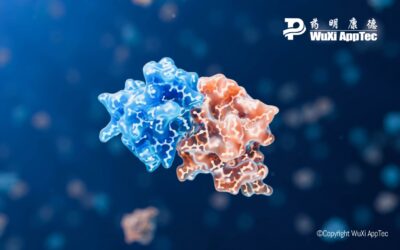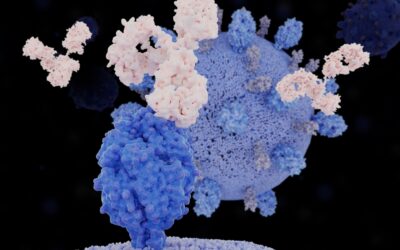In vitro and in vivo ADME studies provide valuable data about a test article as it moves through preclinical development. In this short guide, we provide an overview of in vivo ADME testing, including why it’s important and how it works.
For a successful Investigational New Drug (IND) submission, drug developers need to put together a complete data package that includes in vivo studies. An IND package requires an assessment of the pharmacokinetics and biological disposition of the test article in animals and information on the ADME properties of the test article, if known. This typically starts with in vitro testing before moving on to in vivo ADME testing.
The data generated from in vivo ADME studies provide a more complete picture of safety and risk – and make the test article more compelling for clinical approval. As a result, in vivo ADME studies are required to file a New Drug Application (NDA).
What Is in vivo ADME Testing?
In vivo ADME studies are generally conducted with radioactive labels on the target test article to provide quantitative information on the mass of distribution, rate of metabolism, and pathway of excretion for the test article and its metabolites.
While in vitro ADME studies are performed outside of a living organism in a controlled environment, in vivo studies are done within a living system. Researchers also conduct ex vivo studies, in which samples of tissues, cells, blood or plasma are collected from an in vivo system but experimented on or investigated outside of the natural in vivo environment. The information gleaned from in vitro ADME assays help researchers and developers move forward with ex vivo and in vivo studies.
In vivo ADME falls under the Drug Metabolism and Pharmacokinetics (DMPK) umbrella following an understanding of the test article’s toxicology. While some in vivo ADME testing can occur early on in discovery, most in vivo tests typically happen later in the stage of optimizing the structure and properties of the test article. They are sometimes one of the last studies conducted prior to first-time radiolabeled clinical studies.
Later-stage in vivo ADME studies administer radiolabel test articles to living systems. Radiolabeled test articles incorporate a radioisotope that allow researchers to track the passage of a molecule through the system. After dosing, you can examine ADME properties:
- Absorption: Does the test article get into the circulating blood and distributed to tissues?
- Distribution: Where does the test article travel to in the body and how is it retained in tissues?
- Metabolism: What does the body do with the test article in order to eliminate it from the body?
- Excretion: How does the test article and metabolites get removed from the test system?
Understanding these properties in vivo is critical as you prepare to take a test article to clinical studies. Here’s what the testing process usually entails.
What Results Do in vivo ADME Testing Studies Provide?
Absorption: Pharmacokinetics
In vivo ADME studies start by looking at the pharmacokinetics (PK) of the test article, the characterization of the time course of the test article being absorbed, distributed, metabolized and excreted.
To characterize the movement of the test article into the body (absorption), researchers analyze the test article concentration in plasma, blood and tissues.
Distribution: Quantitative Whole Body Autoradiography (QWBA)
QWBA determines a test article’s tissue distribution, both visually and quantitatively. A living system is dosed with a radiolabeled test article and then radioactivity measured through cross section slides to show distribution in tissues over time.
Read More: QWBA and Mass Balance Studies
Excretion: Mass Balance & Bile Duct Cannulated (BDC)
Mass balance and BDC studies characterize how the test article is eliminated from the test system – specifically the test article’s excretion path and rate. The test system or in vivo system and samples are analyzed for radioactivity, providing insight into how the test article is eliminated from the body.
Metabolism: Metabolic Profiling
To understand the metabolic pathways in the animal system, researchers collect urine, feces and bile samples from mass balance studies and send them for metabolic profiling and identification. These studies are used to discover what metabolites are formed following test article distribution to ensure that there are not any potentially harmful human-specific metabolites.
Human AME Studies
The previously listed in vivo ADME tests provide the data needed in preparation for human radiolabel absorption, metabolism, excretion (AME) studies. Human AME studies help drug developers understand the nature and amounts of drug metabolites formed in the human body, and the data reveals the biotransformation, disposition, and clearance of the parent test article and its metabolites. These studies are crucial to guide the design of clinical drug-drug interactions and the dose level selection in phase II and II clinical trials.
Common in vivo ADME Testing Challenges
In vivo ADME studies are tried and true, having been around for 60+ years. While every study has its own unique design, dose routes and requirements, the challenge is not necessarily in the tests themselves. The challenge is in the preparation and scheduling.
#1. Purity of Test Article
In vivo ADME testing requires radiolabeled test articles, which are inherently unstable. This is because radiolabeled test articles decay and degrade over time.
So, to conduct your work, you need to maintain a certain level of chemical and radioactive purity the entire time. The challenge is deciding how and when you are going to produce your test articles.
Sometimes, a test article is perfectly pure after sitting for months. Others lose purity within a short time. It all comes down to working with a good radiosynthesis chemist and one that can help you find a good isotope location.
If the test article does degrade, more often than not the test article can be repurified so the testing process can continue. However, your synthesis house may not be able to work on your article right away, which means you will not be able to stick to your originally planned in vivo test schedule.
This brings us to the second problem.
#2. Scheduling
It’s important to think ahead when scheduling test article production, testing, and data collection. You need to work backwards from when you are scheduled to run your human AME studies.
For example, suppose you have a deadline to run your human AME studies in November. This means:
Your data package needs to be ready for your internal review board a few months before the human AME study.
To get that data, you need to run your in vivo tests. A QWBA study often takes 12 weeks or more, so that will add at least 3 months in the timeline.
To run your QWBA studies, you need your radiolabeled test articles to be synthesized, and that can take up to 8 or more weeks.
Simply put, the testing process takes a long time – and there are often complications and questions along the way. Planning ahead and building flexibility into your schedule is critical. Luckily, you don’t have to figure it out alone.
Work with an in vivo ADME Laboratory Testing Partner
An in vivo ADME laboratory testing partner is just that – a partner. They have the experience and infrastructure to help you plan ahead, address any challenges that come up and make the right decisions to better understand and advance your test article.
WuXi AppTec’s Laboratory Testing Division’s DMPK team is ready to partner with you to meet your drug discovery and development program goals – from expert advice and testing to project management. With research facilities in the United States (New Jersey) and China (Shanghai, Suzhou, and Nanjing) and our DMPK team of ~1,000 scientists, we are serving 1000+ global clients and have successfully supported 600+ IND applications.
Talk to an expert about your upcoming project to see how we can help.


